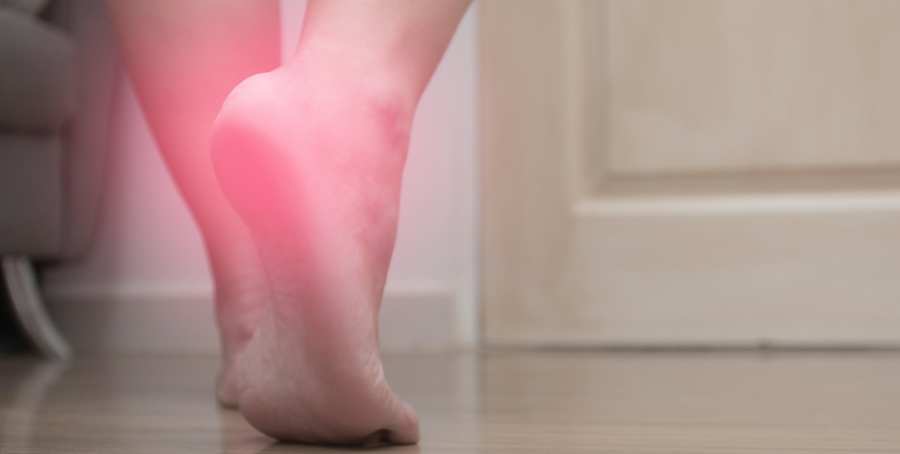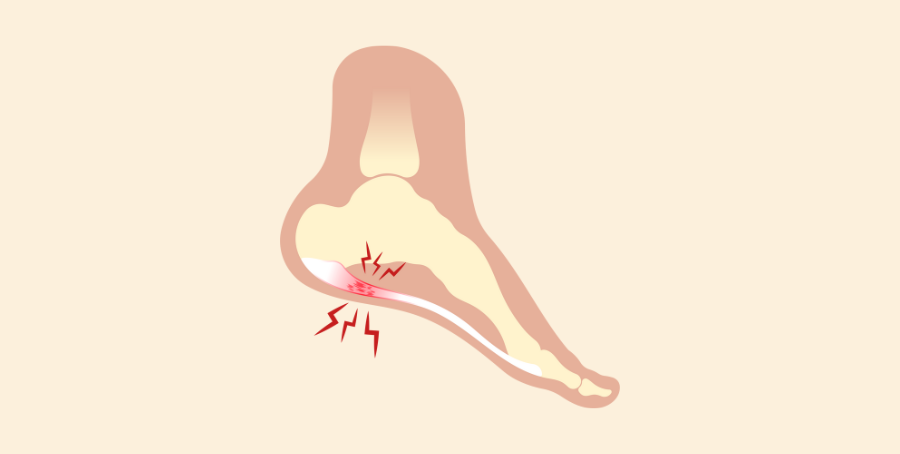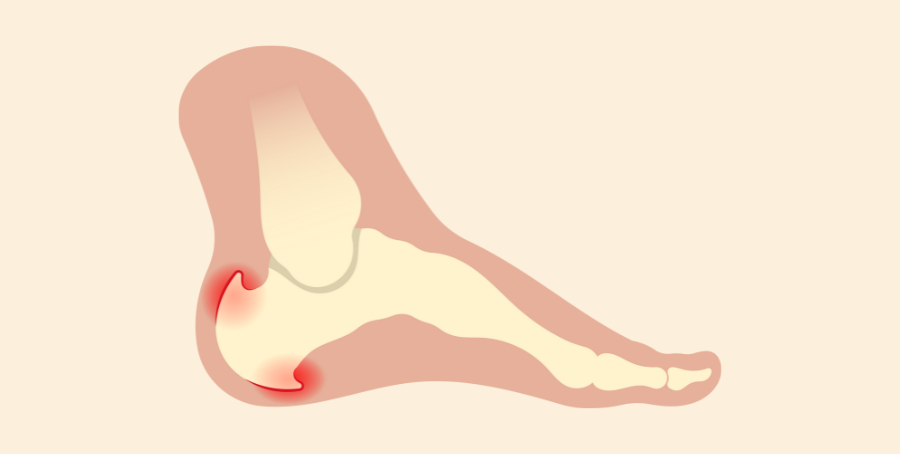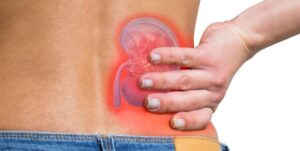Mrs Lim gets pain in the foot, especially in the heel of the foot. In the morning, once her right heel strikes the floor, intense pain will be experienced. This makes her limp initially, but after walking for a bit, her heel pain will settle down to a background discomfort and ache. Every time Mrs Lim gets up from sitting for prolonged periods the same sharp pain in the foot will make walking unbearable initially.
She has tried some self-help remedies like foot massages, and heeling stretching at home but it became worse. She saw a doctor and was told that she has plantar fasciitis and was told also that this was most likely due to a heel spur in her foot causing the pain.
In this article we interview Sue Wan, TCM physician form Singapore Paincare TCM Wellness and Dr Bernard Lee, Consultant Pain Specialist from Singapore Paincare Center to understand what plantar fasciitis and heel spur are and if they are culprits to Mrs Lim’s heel pain? Knowing what these conditions are is the key to finding an effective treatment plan to ease heel pain. Read on to find out more about.

What is Plantar Fasciitis?
Plantar fasciitis is a common cause of heel pain characterised by the inflammation and irritation of the plantar fascia, a thick band of tissue that runs from the heel, along the arch of the foot, to the toes. The plantar fascia acts as a shock absorber and supports the arch of the foot. However, when the plantar fascia is over-stressed or overused, it cannot recover from the tension that it was put under, leading to micro-tears and inflammation. This creates pain over the heel area at the bottom of the foot.
Well, what would place too much stress on the plantar fascia? Excessive standing, walking, or running (especially with improper shoes) are common reasons. This is especially so if you are just starting out on a new exercising regime or working out for the first time.
Besides physical activity, foot structure plays a significant role as well. A high arch or a flat foot creates an uneven weight distribution, placing more stress on the plantar fascia. Other risk factors include obesity, rapid weight gain, tight calf muscles, and old age which all place extra tension on the heel and plantar fascia. The pain is usually worse in the morning when you take your first steps of the day or after prolonged periods of rest.

What is a Heel Spur?
A heel spur is a bony outgrowth on the heel bone. Heel spur is the natural attempt of our body to repair wear and tear of cartilage and long-term muscle or ligament strain at the heel. Heel spurs usually do not present any pain symptoms unless they press onto other bones or soft tissues such as ligaments, tendons, or impinge nerves on the heel.

About 70% of patients with or without plantar fasciitis have a heel spur that can be observed on an X-Ray. Confusion arises when we mistakenly assume that the heel spur is causing the heel pain. In reality, the bone spur seldom causes pain or other symptoms, and need not be removed even after plantar fasciitis has healed.
What Are the Causes of Plantar Fasciitis and Heel Spur from a TCM Perspective?
According to Physician Sue Wan, plantar fasciitis and heel spur in TCM perspectives are understood to be due to an imbalance or disruption to the flow of Qi (energy) and blood within the meridians and organs associated with the foot. When there is an obstruction or stagnation of Qi and blood in these meridians, and harmony in the body is disrupted. This can lead to pain and inflammation in the plantar fascia. Qi imbalance or stagnation can be presented in the following ways:
- Meridian Imbalance: The Kidney, Spleen, and Liver meridians are believed to play a significant role in foot health as these meridians pass through the foot. An imbalance in these meridians can affect the flow of Qi and blood, making the foot more susceptible to injury and inflammation.
- Internal Organ Disharmony: Weakness or disharmony in the Kidney, Spleen, or Liver organs can impact the strength and nourishment of the tendons, ligaments, and muscles in the foot, making them more prone to injury and inflammation.
- External Factors: Excessive physical activity, improper footwear, or exposure to cold and dampness can also worsen the condition by exacerbating existing Qi imbalances.
How Would Pain Differ Between Plantar Fasciitis and Heel Spur?
“Plantar fasciitis pain is characterised by a sharp and burning sensation at the bottom of the foot from the heel bone to the arch of the foot. Pain is usually the most intense first thing in the morning and may subside quickly but then returns after prolonged standing or walking or intense exercise like running,” Sue Wan explained.
On the other hand, heel spurs usually do not cause pain. Sue continued to explain that ‘in the rare event that it does, the pain will be more localised to the heel rather than the whole feet”. Other symptoms include redness, swelling, and changes in gait patterns.
What Are Some Non-medical Ways to Manage And/or Relieve Pain from Plantar Fasciitis and/or Heel Spurs?
If you experience intense pain from the heel, the first step would be to refrain from any running or high-intensity movements that would place tension on the feet. Instead, ice the bottom of your foot by rolling your foot back and forth over a frozen water bottle for about 10 minutes 3-4 times per day.
For long-term treatment of plantar fasciitis, some natural solutions that you can consider are:
Herbs
Herbs are natural ingredients to address health issues and restore balance in the body by unblocking Qi and blood stagnation. Herbs can be combined based on the individual’s unique constitution to optimize the therapeutic effect and resolve the root causes of the health issue.
Turmeric (姜黄) and ginger tea can reduce inflammation, swelling, and pain with their anti-inflammatory properties. In TCM, the 2 herbs are known to promote the flow of Qi and blood and disperse cold from the body, restoring Qi imbalances for a smoother recovery. For pain relief, Ru Xiang (乳香) and Mo Yao (没药) invigorate the Qi and promote the flow of blood to resolve pain caused by Qi/blood stagnation.
Herbs are often consumed complementary with TCM services like acupuncture to maximise the therapeutic effects and achieve a pain-free body as soon as possible. To understand which herbs can maximise the therapeutic effects specific to your body’s constitution, it is better to seek a physician’s consultation.
Acupressure
Sue Wan explained that plantar fasciitis and heel spurs are a manifestation of deeper imbalances within the body; hence she suggested that the treatment must aim at restoring overall health and balance rather than just the foot issues themselves.
According to her advice, acupressure is one of the effective ways to achieve this as acupressure restores the balance of Qi and blood, strengthens the affected meridians and organs, and alleviates pain and inflammation. In addition, acupressure stimulates the production of endorphins, our body’s natural painkillers. To treat heel pain related to plantar fasciitis and heel spurs, some common acupoints that you can massage are:
Tai Xi (太溪)
It is an acupoint in the kidney meridian. It is located on the inner ankle in the depression between the ankle bone and Achilles tendon.
Kun Lun (昆仑)
Located on the external ankle, in the depression between the ankle and outer edge of Achilles tendon. This acupoint helps to alleviate pain. Do note that this is contraindicated for pregnant women as it is known to induce labour.
Yong Quan (涌泉)
Located on the bottom of the foot between the second and third toe, at the depression below the balls of the foot. This acupoint helps to stimulate Qi flow, which helps with conditions related to liver and kidney yin deficiency.
Ran Gu (然谷)
As a fire point of the kidney channel, this acupoint removes heat and relieves pain in the foot and throat. It is located anterior and inferior to the medial malleolus, in the depression on the lower border of the tuberosity of the navicular bone.
Foot stretches
Foot stretches and exercises strengthen the calf and foot muscles, creating better stabilisation and alignment of the plantar fascia, which is key to preventing further injuries. Not only that, but this also eliminates any stiffness and tension in the foot that would worsen the heel pain. Some common exercises involve:
- Toe curls: With your knees straight or bent, gently pull your toes backward until you feel a stretch at the bottom of your foot. Hold for 20 seconds and repeat for another 3 to 4 times.
- Calf stretch: Your calf muscles are connected to the plantar fascia via the Achilles tendon. When calf muscles are tight, the Achilles tendon shortens, which increases tension and stress on the plantar fascia. To stretch your calf muscles, place your toes against a wall and lean forward. Likewise, with your feet on the floor, bend forward and try to touch your toes with your fingers.
- Towel stretch: Wrap a towel around the base of the foot and gently pull the towel towards you until you can feel a stretch. Hold for about 30 seconds and repeat the process a few times. This should loosen the plantar fascia and strengthen the surrounding muscles.
Alternatively, you could visit a professional physical therapist who will be able to provide a targeted treatment to mitigate any other underlying conditions.
Get better footwear
If you are an active runner or are required to stand for prolonged hours at work, make sure your shoes fit well and provide sufficient cushioning for your feet. For women, try to avoid high heels, or at least wear one below two inches high to minimise the uneven weight distribution. Get insoles or heel cups, which are plastic pieces that are worn on the heel to lift the heel, alleviating pressure on the plantar fascia and providing shock absorption.
When resting at night, your fascia will be shortened due to lack of use. Thus, the stretching of the plantar fascia when you take your first steps in the morning can be extremely painful. To avoid this, you can consider getting a night splint, which keeps the foot and calf in a stretched position throughout the night to maintain proper alignment and eliminate stiffness in the morning.
Kinesiology tape
Kinesiology tape is an elastic tape that supports and stabilises the joints. When the tape is applied, it lifts the skin, which creates a space between the skin and the underlying tissues and muscles. This effect increases blood and lymphatic circulation to the taped area and reduces swelling and inflammation.
Place the tape on the ball of your foot and apply the strip along the bottom of the foot, ending at the back of the heel. Place another strip across the first one to provide more stability.
Weight management
To speed up the healing process, alleviating some weight and pressure from your feet is key if you are overweight. Start with at least 30 minutes of movement per day. You can consider low-impact activities such as cycling, walking, and yoga, as well as the aforementioned stretching exercises. Not only does this keep the weight off, but it can also strengthen your muscles to lower the risk of injuries. Beyond that, being more conscious about what type of food you are putting into your body will be advantageous for maintaining a healthy weight.
In TCM, we emphasise the mind-to-body connection. Meditative exercises like tai chi and qi gong incorporate both physical and emotional therapy that can help to increase your range of motion whilst promoting relaxation, which in turn may help to boost Qi levels as well as regulate the Qi flow.
What treatments can we seek if the pain persists despite trying all the methods above?
According to Dr Bernard Lee, about 30% of patients still experience pain despite having tried various treatments. Such treatments include rest, avoiding strenuous activities, TCM, physiotherapy, and orthosis support. Even anti-inflammatory painkillers may not be effective. These patients will benefit from the use of anti-inflammatory injections such injection of cortisone and platelet-rich plasma therapy on the inflamed area to reduce swelling and accelerate healing. Find out more about what these treatments do here.
Conclusion
Don’t let your heel pain become your Achilles’ heel. Find out the most effective treatment plan for you via a consultation with a TCM practitioner or healthcare professional. Before you know it, your heel discomfort will be gone, and you can bounce back to your feet in no time! Book an appointment with Singapore Paincare TCM Wellness to kickstart your recovery journey today!Top of Form
Get the Appropriate Paincare
At Singapore Paincare TCM Wellness, we integrate a unique east-west approach to maximise the effects of our treatments. Our physicians and therapists undergo multiple training at Singapore Paincare Academy (administered by Singapore Paincare Medical Group) to gain a better understanding of clinical conditions so that together with their TCM expertise, they can help patients recover.















